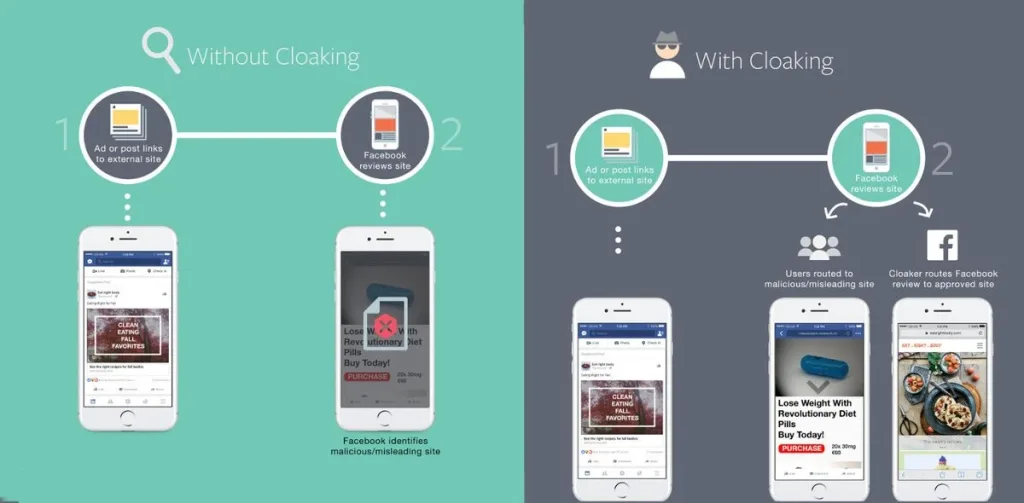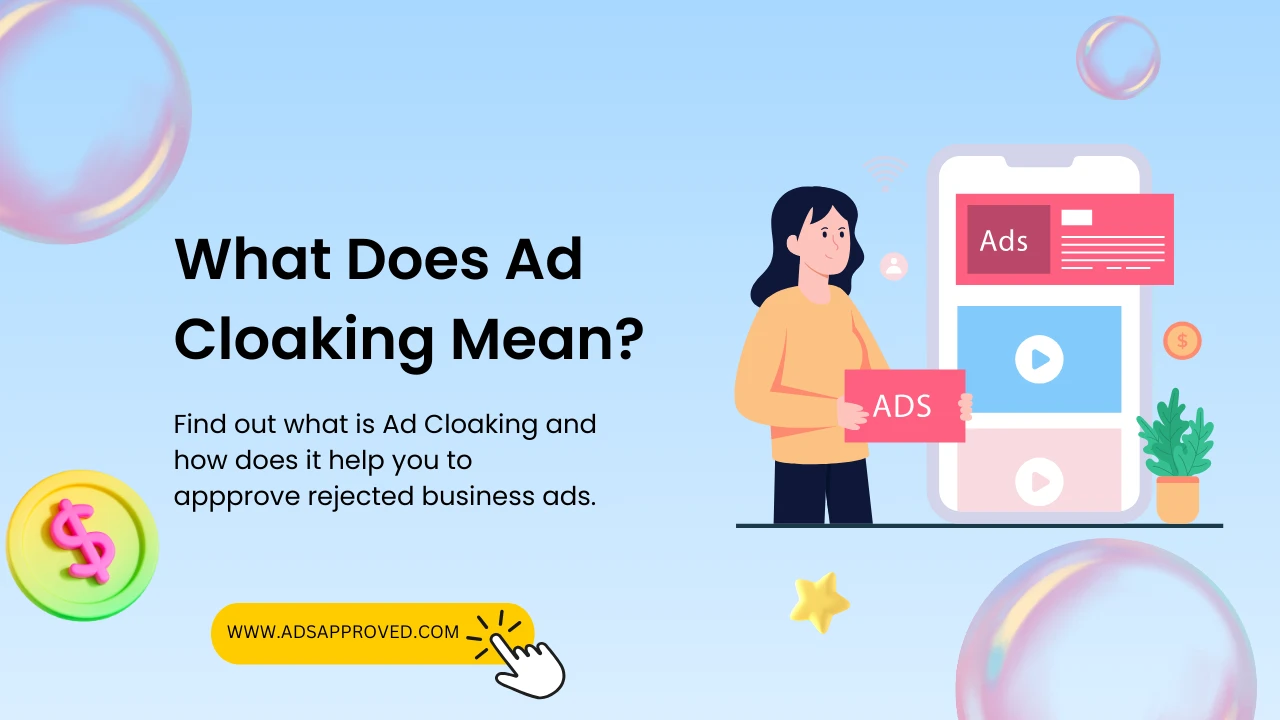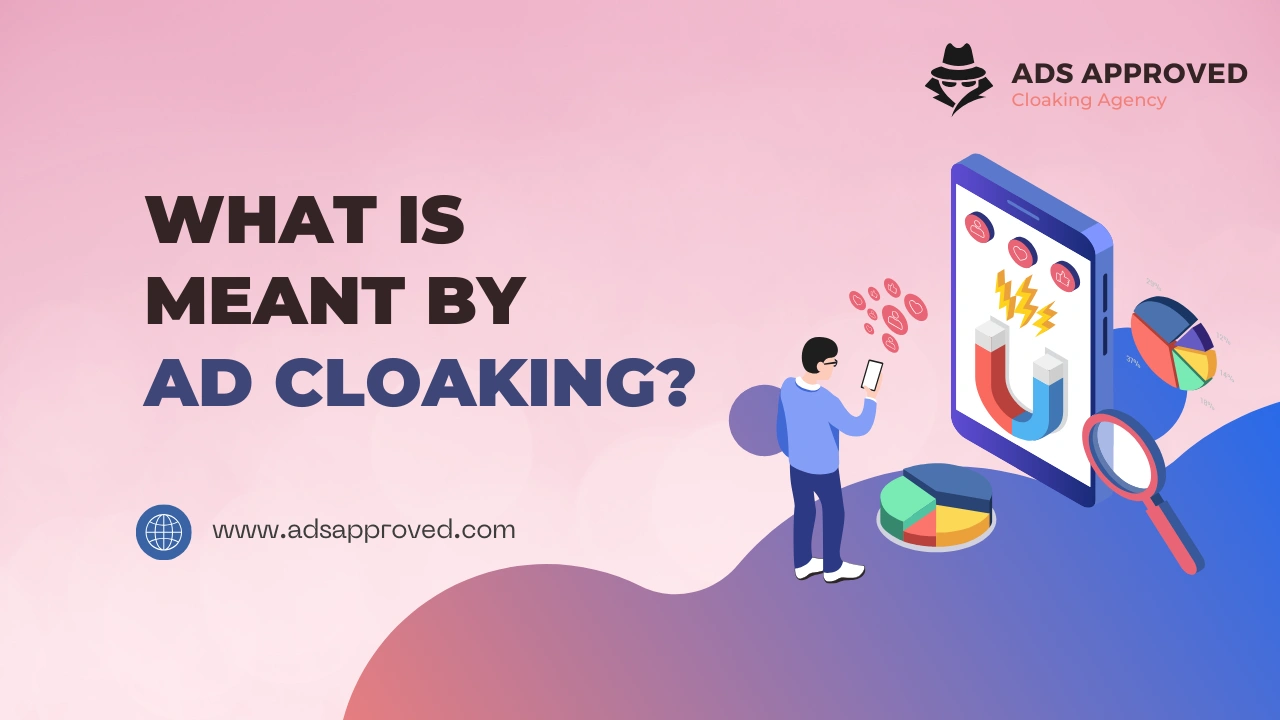Digital marketing is a world where every click can result in potential profit. However, suppose your ad is related to a restricted product, and it’s against the platform’s guidelines on which you want it live. In that case, there can be hurdles for you. Most platforms do not allow ads related to grey niches or restricted businesses. These platforms include Snapchat, Google, YouTube, Facebook, Instagram, Bing, etc. Fortunately, ad cloaking is a technique that can help you in the situation.
Most online social media platforms do not approve ads against their policies. They do so to prevent users from any harm. Moreover, sometimes, your ad seems policy-compliant to you, not the ad reviewers and search engine crawlers. This results in the disapproval of the ad. However, advert cloaking provides a meaningful way to get ad approval. Most advertisers use a sophisticated and deceptive technique to get ad approval across various platforms.
In this article, we will discuss about cloaking ads and how it works.
What is Ad Cloaking?
Ad cloaking is a valuable technique most advertisers utilize to get their ads approved from various platforms. It efficiently deceives game search engine algorithms, ad reviewers, and ad bots. The cloaking process involves showing a policy-compliant safe page to search engine crawlers and ad reviewers. While it shows the same offer page with non-compliant content to target human traffic.
The cloaking approach allows most restricted business owners to circumvent advertising rules and regulations. Furthermore, it will enable advertising of banned or restricted products such as CBD, alcohol, cryptocurrencies, forex, etc.
Types of Ad Cloaking
Cloaking is of two types. Here is a quick overview of both.
- Static Ad Cloaking:
It focuses on IP addresses and user-agent strings to show different content to humans and review the audience accordingly. In static cloaking, advertisers design separate web pages, one compliant with a search engine or social media platform policies and the other which contains misleading or restricted content for a human audience. It is a static way of cloaking and assists cloakers in making the cloaked content consistent.
- Dynamic Ad Cloaking:
On the other hand, dynamic cloaking focuses on real-time data analysis and server-side scripting to showcase tailored content to different audiences. Dynamic cloaking works dynamically by showing cloaked content to human viewers and authentic content to search engine crawlers. The accommodative nature of dynamic cloaking allows cloakers to distinguish between audiences effectively.
Static ad cloaking is impressive, but dynamic cloaking leverages advanced technologies and methods to take out real-time deception. You can acquire any of the two methods for cloaking your ad according to your choice to get ad approvals.
How Does Cloaking Ads Work?

Cloaking of ads is done using the following mechanism:
Techniques and Software:
Ad cloaking is usually done with the help of special software, which can differ between human audiences and ad bots. Moreover, cloaking also involves using scripts that show different content depending on the viewer’s IP address. These resources show that the cloaked ad works properly by detecting if a visitor is a human or a search engine crawler.
IP Cloaking:
IP cloaking is a method that works by identifying the IP addresses of search engine crawlers and showing them safe and platform-compliant content. On the other hand, humans with different IP addresses can see the cloaked content, which always contains prohibited content.
Referrer Cloaking:
Referrer cloaking uses the HTTP referral header, which gives information about the URL that led to the current page. Cloaking software can utilize this data to determine if a visitor came from a search engine result page, SERP, or another website. If the referrer is an online search engine, the cloak stuff is hidden to comply with the rules. Still, direct visitors will see the false information.
User-Agent Cloaking:
It focuses on the user-agent strings given by web browsers to determine the browsing type. This way, cloaking software can quickly identify whether the visitor is an ad bot or a human user. Thus, it shows different content accordingly.
Struggling to approve your Ads by TikTok. Get your rejected TikTok ads approved by TikTok Ads Cloaking technique.
Why Do Advertisers Utilize Cloaking?

Most advertisers and restricted business owners use the cloaking technique for the following reasons.
Bypass Security Measures:
Advertisers with misleading intent use cloaking techniques to circumvent security and detection measures adopted by social media platforms and search engines. Social media platforms can prevent malicious content, scams, or prohibited content. Cloaking represents harmless ad content to reviewers to target a greater audience.
Target Specific Demographics:
Cloaking of adverts allows advertisers to target demographics relevant to relevant services. Dynamic cloaking will enable advertisers to analyze users depending on their browsing history and location. It allows advertisers to develop deceptive ads.
Enhanced CTRs:
Cloaking can increase the click-through rates for most advertisers. It involves the creation of an ad that entices users to click. This can result in a better conversion rate and the success of the brand.
Results of Ad Cloaking
Cloaking an advertisement significantly impacts viewers, search engines, and advertisers.
Impact on Advertisers:
Advert cloaking has the following positive effects on advertisers.
- It allows us to tailor the ad campaign according to the targeted audience. Cloaking an advertisement allows the advertiser to show different content to different viewers to increase the relevance of the ad.
- Cloaking ads offers a competitive edge in scattered markets.
Impact on Users:
Cloaking impacts the users in the following way.
- It offers the user an enhanced and engaging user experience. By showing target adverts instead of general ads, users will feel connected with the advert, resulting in great conversions.
- The cloaking technique lets users see the content or services in geo-restricted countries.
Impact on Search Engine Crawlers:
It has the following impact on ad reviewing systems and search engine crawlers.
- Advert cloaking helps improve search engine indexes by showing search engine-optimized engine-optimized content to crawlers.
- Cloaking allows you to present keyword-rich adverts to crawlers, which is encouraged by social media platforms.
Why Should You Choose Ads Approved For Ads Cloaking?
Ads Approved is the ideal choice for every business owner. It can quickly get ad approval on all social media advertising platforms. Furthermore, it has expertise in the cloaking field and uses the following strategies to ensure your ad campaign is optimal.
- It does extensive research to find out keywords and advert content that most ad companies quickly approve.
- Ads Approved thoroughly understand your niche and website before creating the custom safe page for ad reviewers and bots.
- It sets up the cloaker for noncompliant adverts so you don’t face any difficulty.
- Ads Approved genuinely check your cloaking setup.
- It monitors the performance of your ad frequently to scale conversions and keep your ads alive.
Final Thoughts!
Ad cloaking is the best way to get ad approval across any platform in today’s digital landscape. It allows you to show a policy-friendly advert to ad bots, search engine crawlers, and non-compliant offer pages to target a human audience.
With the help of cloaking, you can get ideal CTRs and the best conversion rates. Ads Approved is a trustworthy cloaking service provider with years of expertise.



